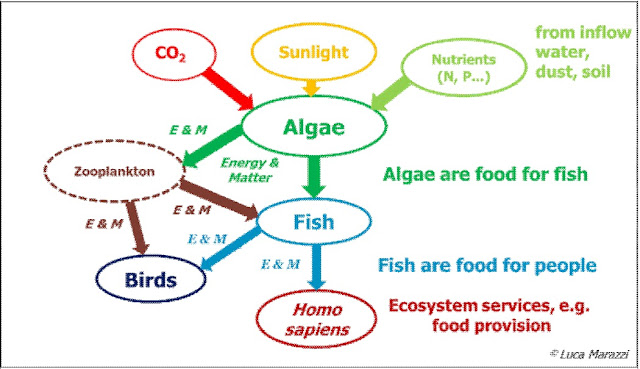Polluted H2O Has Got To Go
Keywords: Key Biscayne, stormwater run-off, nutrient pollution, marine life
Water
pollution is a global issue caused by unfiltered, contaminated water that flows
from drainage pipes into canals/rivers, and eventually makes its way into large
lakes and oceans. Locally, these effects can be seen in Biscayne Bay which is
causing great harm to the Biscayne estuary. Every year, Biscayne Bay becomes
more polluted. A combination of solid, man-made and organic materials, plus
micronutrients and chemical pollutants, all make their way into the waters of
the Biscayne estuary. The biggest issue with the pollution in this estuary is
the decline of seagrass, which is a vital component to Biscayne Bay.
I
met with Elizabeth Kelly, from Miami Water Keeper, to discuss current issues in
Biscayne Bay and what the threats of pollution pose to the overall health of
the estuary. She explained that the presence of solid trash and organic
waste actually aids in the formation of bacteria. It provides a surface for the
bacteria to colonize on, which kick starts the degradation of water quality. The
presence of fecal bacteria has also been recorded during water sampling,
combined with other bacteria and nutrients that stem from fertilizers and
pesticides. The goal is to identify the sources of these pollutants, as well
as come up with a plan to prevent the trash and solid organic waste from
flowing out into Biscayne Bay due to stormwater run-off. I plan on using the
information she provided to further narrow my research and perhaps come up with
a mechanical sifting device, powered by the flow of water, to remove the solid
pollutants from the flow of stormwater run-off. The key factor is to be able
to operate these machines without the constant need of manual labor to clear
the debris from sifts or grates. I also want to take the information she
provided and look into how we can filter out the chemical pollutants that are
dissolved in the stormwater run-off. She mentioned the possible implementation
of a water filtration plant, similar to those already in place for drinking
water, to filter out the stormwater run-off before it enters the Biscayne
Bay.
Preservation
of the estuary is of the utmost importance as it is one of the wonders, unique
to South Florida. Seagrass in Biscayne Bay has been almost completely
decimated, leaving behind a shallow, sandy bay that is unable to support any
life. As seen in the fish kill of 2020, from one day to the next, the entire
marine biomass in Biscayne Bay can be completely wiped out. Biscayne Bay serves
as a vital role in the economy of South Florida as it provides recreation, and
eco-tourism which is a major contributor to the local economy.
Reference
Carbonell, A., Joykutty, L., & Velde, B. (2021). Seagrass fatalities in North Biscayne Bay, South Florida due to increases in nutrients and macroalgae in its environment. Journal of Student Research , 1.
Author Biography: I am Giancarlo Cheesman, and I am a senior at Florida International University, completing my Bachelor’s Degree in Sustainability and the Environment. I graduated from Oakton Community College in Des Plaines, IL with an Associate’s Degree in Law Enforcement, and I aspire to become a Florida Fish and Wildlife Law Enforcement Officer. The research I am conducting is on the sources, negative effects, and possible solutions for stormwater run-off, and nutrient pollution that is draining into Biscayne Bay.
-
This
is a close up view of a fish kill in Biscayne Bay that occurred in 2020. The
fish kill was caused by a combination of trash, organic solid waste, and
nutrient pollution that fed the algae bloom leading to the suffocation of all
marine life. Dissolved oxygen levels present in the water was too low to be
able to support any kind of life.
Figure 2. This is an aerial view of Biscayne Bay which illustrates how shallow the water is, as well as the size of the bay. The key feature is that it’s a shallow bay that allows seagrass to grow, providing vital habitat for many different marine species. Biscayne Bay is an estuary that is a key feature of our South Florida ecosystems.
Figure 3. This is a waterside view of the solid debris floating around in the water, comprised of trash, and organic solid waste that flows out into Biscayne Bay due to stormwater run-off. This is posing a large threat to mammals, such as manatees, that come up to the surface of the water to breathe as they end up becoming completely surrounded by trash and floating debris.
Figure 4. This is an image of an algae bloom that was set off by nutrient pollution. The nutrient pollution also ends up in Biscayne Bay due to the stormwater run-off. Algae blooms are detrimental to water quality as it tends to consume all the dissolved oxygen in the water, leaving marine life without enough oxygen to survive.






Comments
Post a Comment